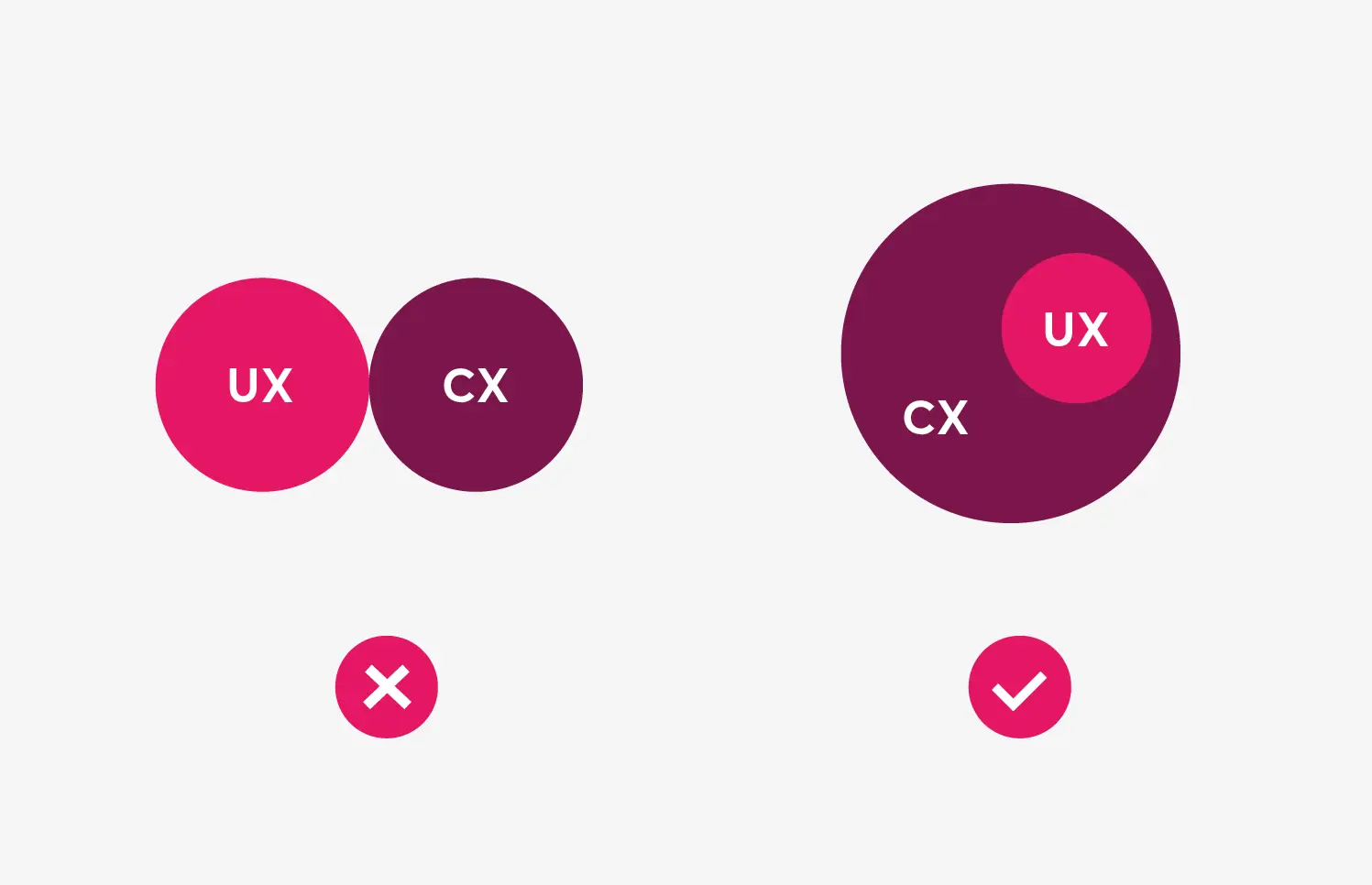‘User Experience’ (UX) and ‘Customer Experience’ (CX). They sound alike, right?
Just like many buzzwords in today’s digital world, many people imagine them to be mutually exclusive. For instance, users are not always considered to be customers i.e., a website user that decides not to make a purchase.
In spite of this, there are many important parallels to draw between the two terms, like the fact that they both work to create more considerate products and brand experiences. To elevate your brand completely, you’ll need to understand these parallels and utilise both CX and UX together.
In this blog, we’ll run over both of these terms in-depth and identify how they can be brought together to work seamlessly.
UX as part of CX
Despite the fact that CX and UX professionals have similar goals, there are a few distinctions to make about them as often they tackle separate problems.
Put simply…
UX deals with people interacting with your product and the experience they receive from that interaction. It’s a specific experience that you can pinpoint in relation to an individual product, typically a digital product.
UX activities might include… testing and iterating versions of designs using feedback from end users
CX on the other hand encompasses all interactions that a person has with your brand, not just your products or services. It’s a holistic experience that covers the entire customer journey, across all channels and overtime.
CX activities might include… working to influence company culture, encouraging a customer-first mindset in all staff members
So, what are the main differences?
UX → the experience received from one specific user interaction
CX → the experience received from all interactions with your brand
What really matters?
Evidently, we’re able to draw distinctions between the two terms, but these distinctions only matter in certain instances (e.g., appointing the UX and CX specialists to design them).
What really matters is the fact that these two strategies can work together to create lasting and profitable customer relationships with your brand.
A good business knows the difference between UX and CX, a successful business knows how to work UX and CX together - UX as part of CX.
UX and CX work collaboratively to create a shared vision of brand success and the customer’s level of satisfaction when interacting with a company; and it’s this shared vision that means they can’t be mutually exclusive. In essence, UX is a smaller part of CX – a cog in the machine.

Take this example…
Amy visits a website and is able to find information quickly and easily and complete all desired tasks with ease. Amy has a good user experience with this website. She later returns to the website looking for further information. She decides to call up the helpline as she requires more information than is available on the website.
Amy is put on hold for 20 minutes and eventually gives up, hanging up the phone. She has a bad customer experience. She is left frustrated but returns to the website which she effortlessly navigates through clear headings and links and a good information infrastructure. Overall, her customer experience isn’t terrible because her user experience was good, and so she decides to make a purchase.
Bringing CX and UX together
If UX is a smaller part of CX, it must be treated as such. Try to create and share as many feedback loops across your CX and UX teams as possible. This means understanding the need for and optimising communication between the two strategies. For instance, good UX that is trustworthy, recognisable, professional, and consistent will work to enhance the overall CX, even though each UX touchpoint functions differently (e.g., website, SEO, organic social media content). If they share a consistent look and feel (e.g., marketing assets, brand guidelines), they’ll work together to enhance the overall CX.
Ultimately, both CX and UX give attention to the consumer’s level of satisfaction when interacting with a company – so why not work them together seamlessly?
Think omni-channel…
Omnichannel marketing is all about providing a seamless customer experience across multiple channels. It’s important because it allows you to reach consumers in a contextually relevant way (e.g., on the multiple devices and channels at their disposal). Here, we see a vivid overlap between CX and UX, as the omnichannel customer experience relies on interactions with both offline and online customers / users. In other words, omnichannel marketing is all about being present on the platforms that your target consumers are using as a way to improve the customer experience.
To read more about the omni-channel approach? Check out our blog
Want to learn more about bringing UX and CX together?

